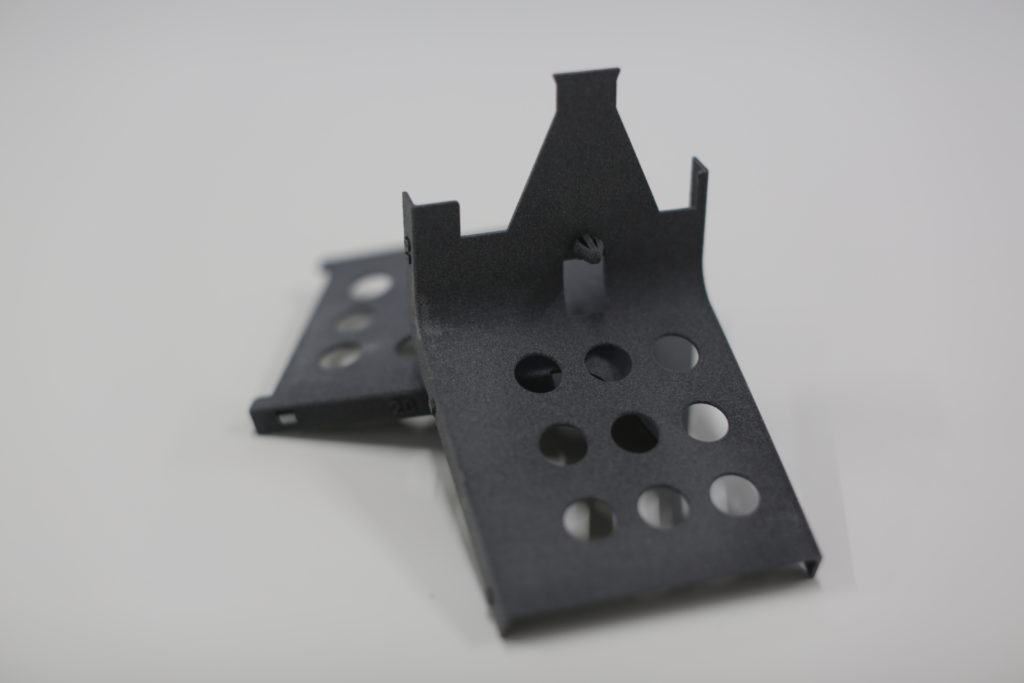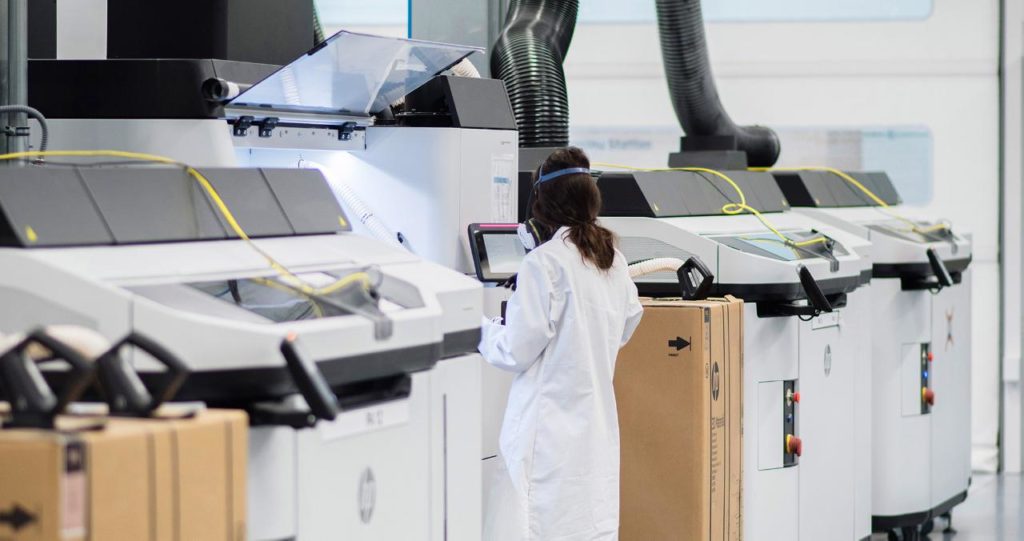Japanese CAD and 3D printing company SOLIZE will be using HP 3D printers to make out-of-production spare parts for NISMO, the tuning and motorsport division of Nissan. SOLIZE is a 3D printing pioneer introducing SLA to Japan in 1990 and expanding into engineering, design and manufacturing services since. Its long run and deep expertise caused them to be selected by NISMO to make end-use car parts. HP noted the benefits of 3D printing for repairs and replacement parts, saying:
“To facilitate repairs and parts replacement, automobile manufacturers are required to provide replacement parts for their products over extended periods of time. Producing or storing parts for vehicles that have been discontinued, upgraded, or overhauled can be challenging and expensive as manufacturers must retain molds and manage inventory storage and logistics. Digital manufacturing and 3D printing enable flexible design and just-in-time 3D production for virtual inventory that meets the demand for complex parts while reducing costs. In addition, sustainable on-demand 3D production contributes to the reduction of industrial waste and carbon dioxide emissions throughout the product life cycle.”
At NISMO, you can buy your own GT3 car or competition oil or a completely restored vehicle. For that last application, NISMO’s Heritage Parts program will rely on HP’s High Reusability PA 12 for parts such as the below-harness protector for the R32 Nissan Skyline GT-R. Additional parts on the Skyline GT-R R32/R33/R34 models will also be offered.

Yasutoshi Kudo, President & CEO, SOLIZE Corporation said of the development:
“SOLIZE has more than 30 years of experience and has honed its technology since it first deployed 3D printers in Japan. We have jointly developed 3D printing technology with Nissan for commercial parts that have been discontinued and take charge of manufacturing the parts. With HP’s market leading 3D printing technology, we are able to support industries including automotive with sustainable production that delivers fast, high-quality and cost-effective results.”
HP’s Jon Wayne, Head of Global Commercial Business for 3D Printing and Digital Manufacturing, stated:
“We are seeing leaders of industry like Nissan recognize the massive cost implications of storage, molds and logistics for replacement parts and how industrial 3D printing can help. Digital manufacturing is a viable, long-term solution for accelerating production, transforming supply chains and activating industries such as automotive. Together with SOLIZE we are focused on helping businesses transform their manufacturing with sustainable, digital production.”

I think that this is wonderful. I’m a huge fan of the idea of using 3D printing in the automotive aftermarket, and even think that there may be a role we can play in coachbuilding. With certification, qualification and liability much less of a concern, the aftermarket is a potential gateway drug for the car industry to come to grips with making and selling 3D printed parts. With low volumes in components, it is also a logical way to make spare parts going forward.
The opportunity in spares is enormous with automotive firms keeping billions of dollars of spare parts and tooling for replacement components in warehouses. Locked up behind fences and walls is useful capital that these companies could deploy to develop new vehicles and outcompete rivals. If one firm was able to transition to 3D printed car components sooner than others, it would have a significant advantage over competitors through being able to deploy additional cash.
At the same time, one could foresee NISMO and others using 3D printing to make race car items that could improve their vehicles. Racing is another competitive business and, there, the production runs are tiny, as well. There are a lot of in-cabin parts that could be made via 3D printing. Lightweighting some of the in-cabin items or making them cheaper to develop may also help that side of NISMO’s business. In the future, NISMO could bring some innovations to the race track faster than rivals if it understood 3D printing better than they did.
I also really like the idea of upgraded parts, so aftermarket components that can be customized, are improved or replaced but improve on existing parts. I really think that there are more opportunities there in which to be even more creative in making these components. It would be easy for NISMO to work with Twikit, for example, to offer customization through the same program; e.g., by getting your name on the aftermarket part or customizing a nob with a design or particular texture. I really think that these kinds of additions to NISMO’s arsenal can really help them to sell more and at higher value, as well. This really would be the perfect sandbox for Nissan to experiment with 3D printing in its automobiles, too. Let’s see if that is indeed what they will do.
Feature image of the 1989 Nissan Skyline GT-R courtesy of TopCarRating.com.
Subscribe to Our Email Newsletter
Stay up-to-date on all the latest news from the 3D printing industry and receive information and offers from third party vendors.
You May Also Like
3D Printing News Briefs, April 13, 2024: Robotics, Orthotics, & Hypersonics
In 3D Printing News Briefs today, we’re focusing first on robotics, as Carnegie Mellon University’s new Robotics Innovation Center will house several community outreach programs, and Ugogo3D is now working...
3D Printing Webinar and Event Roundup: March 24, 2024
We’ve got a very busy week of webinars and events, starting with Global Industrie Paris and a members-only roundtable for AM Coalition. Stratasys will continue its advanced in-person training and...
MIMO TECHNIK, ASTRO Test Lab & LEAP 71 Combine Powers for Computational Engineering in Aerospace 3D Printing
California-based MIMO TECHNIK, a service bureau catering to demanding clients in the New Space and defense sectors, operates with six SLM 500s, four SLM 280s, and three SLM 125s. ASTRO...
EOS Taps 1000 Kelvin for “First” AI Co-pilot for 3D Printing
Additive manufacturing (AM) startup 1000 Kelvin has joined forces with EOS to integrate AMAIZE, a pioneering artificial intelligence (AI) co-pilot for AM, into the EOS software suite. The solution aims...





























